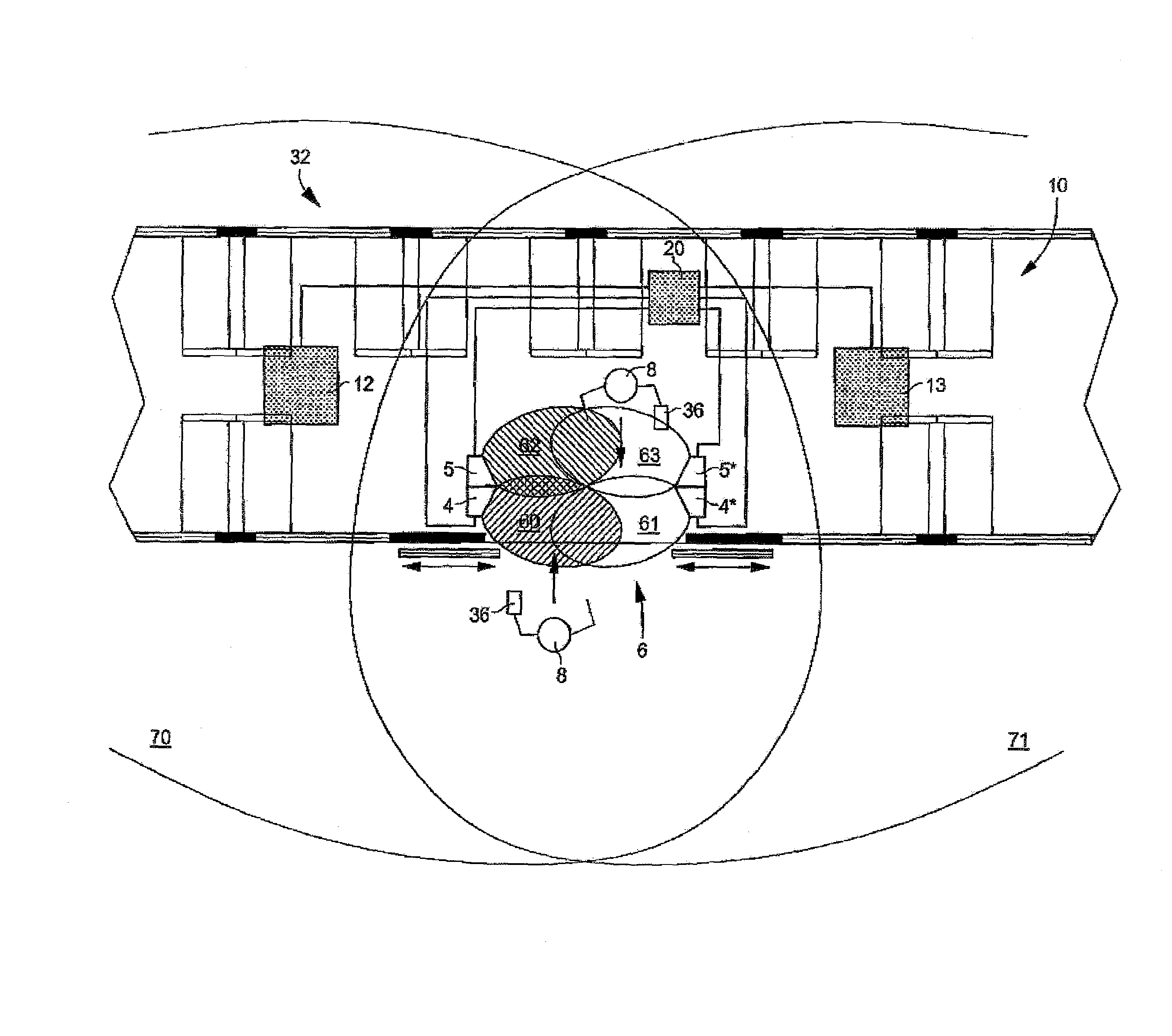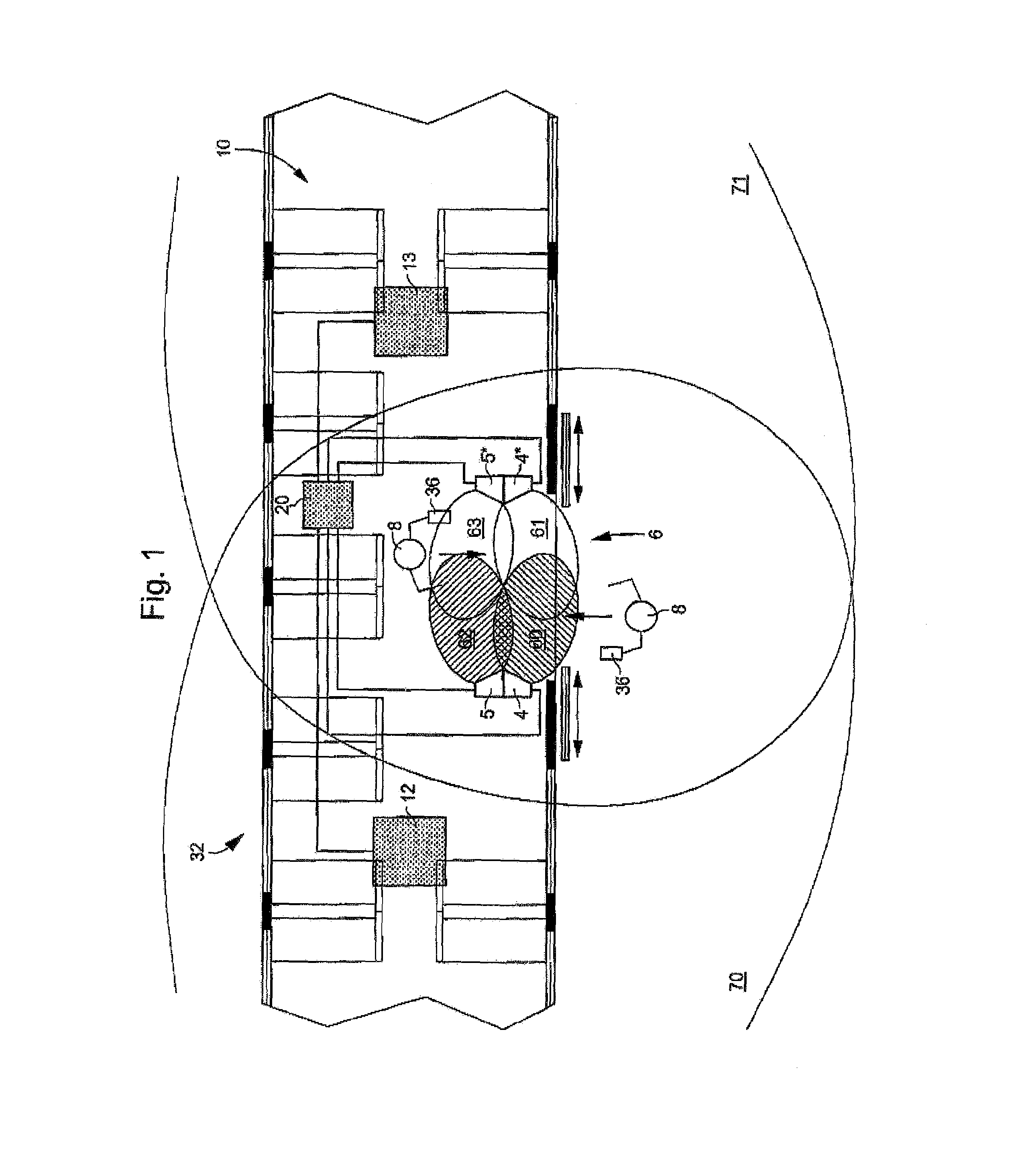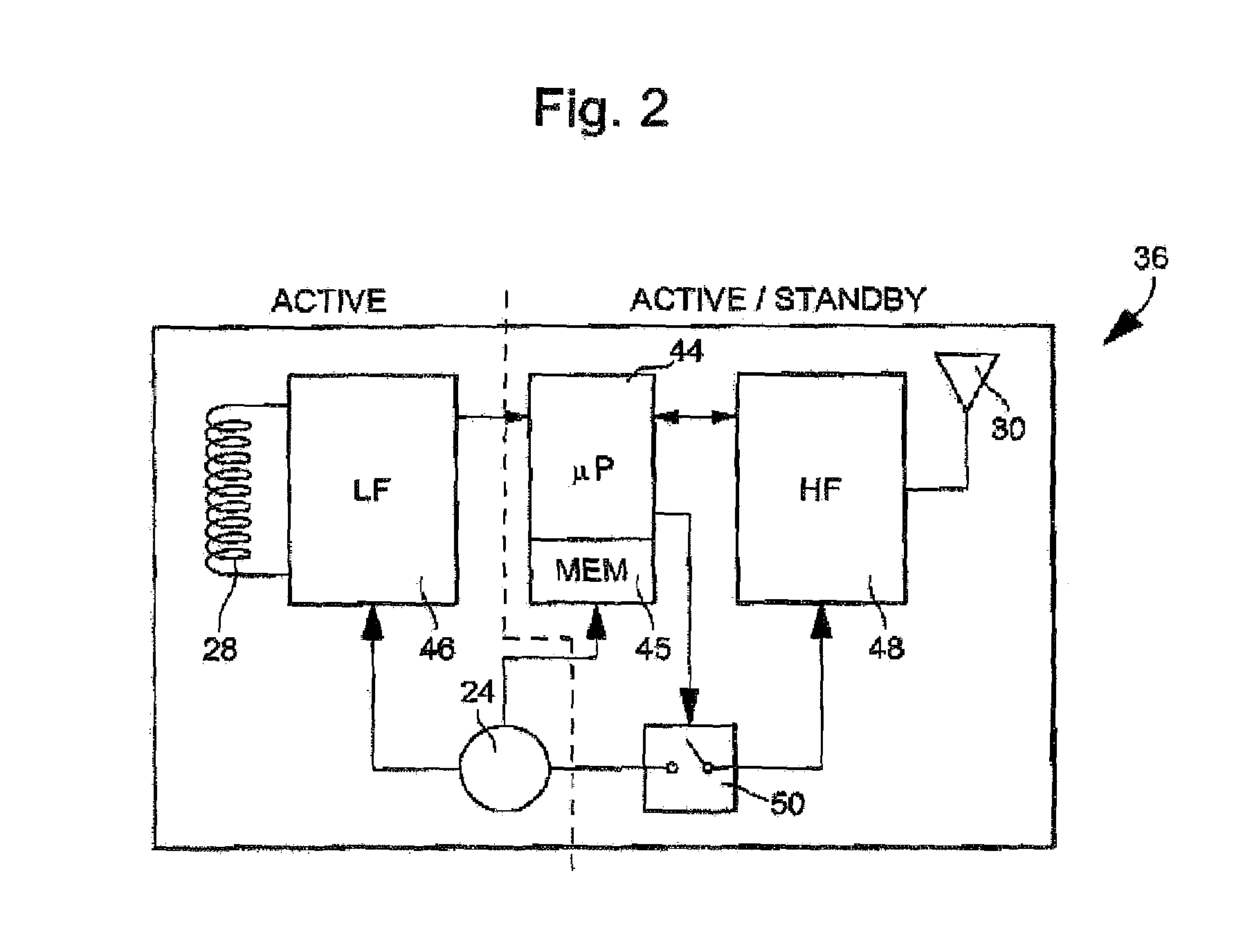System and method for detecting persons or objects in definite areas provided each with at least an entrance
a technology of definite areas and detection methods, applied in the direction of subscriber station connection selection arrangements, subscriber indirect connection, sensing record carriers, etc., can solve problems such as by definition non-optimal
- Summary
- Abstract
- Description
- Claims
- Application Information
AI Technical Summary
Benefits of technology
Problems solved by technology
Method used
Image
Examples
Embodiment Construction
[0043]FIG. 3a shows the format and the content of the low frequency electromagnetic signals A, B transmitted to a portable electronic unit in the specific field of application to public transport means. It is again emphasised that the invention is not limited to this single application.
[0044]By way of purely illustrative, non-limiting example, the first and second low frequency electromagnetic signals A, B each comprise data relating to the delimited space with which the low frequency transmitters placed at the entrance are associated. Thus the first and second electromagnetic signals A, B each comprise a sequence of codes, broken down, in a non-limiting manner, into a plurality of code words WRD_i, i=1, 2, . . . , preferably and typically terminated by a check word or CRC, as illustrated schematically in FIG. 3a.
[0045]The first electromagnetic signal A may thus comprise, as illustrated, first and second words indicating the date and time respectively of passage through the entranc...
PUM
 Login to View More
Login to View More Abstract
Description
Claims
Application Information
 Login to View More
Login to View More - R&D
- Intellectual Property
- Life Sciences
- Materials
- Tech Scout
- Unparalleled Data Quality
- Higher Quality Content
- 60% Fewer Hallucinations
Browse by: Latest US Patents, China's latest patents, Technical Efficacy Thesaurus, Application Domain, Technology Topic, Popular Technical Reports.
© 2025 PatSnap. All rights reserved.Legal|Privacy policy|Modern Slavery Act Transparency Statement|Sitemap|About US| Contact US: help@patsnap.com



